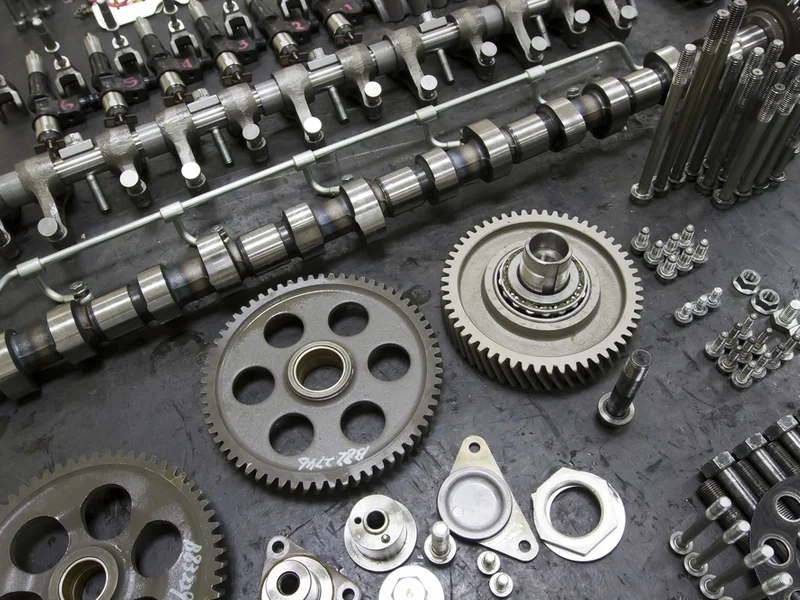Auto Parts Company Stocks

Auto parts company stocks offer investors a way to benefit from changes in the automobile industry. These stocks are more likely to benefit from growth in car production and can give investors access to the aftermarket (refinishing) market, since cars need coating regardless of whether they are internal combustion, hybrid or electric models.
Market Analysis
Market analysis is an effective way to stay abreast of what’s happening in your industry. It also assists you in recognizing trends and potential business opportunities that you should explore further.
Market analysis begins with understanding who your customers are. Once you identify who these customers are, you can create a marketing plan tailored towards that group of buyers.
The global auto parts manufacturing industry is being profoundly transformed by technological advancements and rising consumer interest in cars. These developments enable companies to design products that are technically superior and more efficient.
Furthermore, governments have strict emission regulations that mandate auto manufacturers to use eco-friendly materials in their product production. This has driven the auto parts manufacturing market to experience tremendous growth.
The global automotive components market is projected to expand at a compound annual growth rate (CAGR) of 3.5% from 2022-2032, driven by rising vehicle sales and the increasing popularity of electric and hybrid vehicles. Furthermore, growing demand for lightweight auto parts has further fuelled this sector’s expansion.
Market Segmentation
Market segmentation is a strategy companies use to divide customers into distinct groups based on characteristics. This helps them refine their products and services while increasing profits.
Identification of market segments is a critical step for any business, as it helps you create successful products, craft effective marketing plans and attract prospective customers. Furthermore, it allows for the design of advertising campaigns that will resonate with the right target audience.
Market segmentation can be divided into three main categories: demographic, psychographic and behavioral. Demographic segmentation divides the market into groups based on factors like age, gender, nationality, education level, family size, income level and occupation.
Behavioral segmentation is a type of market segmentation that utilizes information about consumers’ attitudes, behaviors, interests and lifestyles to group them into distinct categories. Auto manufacturers can benefit greatly by using this type of data by targeting advertising and messaging towards certain customer groups to maximize the return on their investment in their market.
Market Trends
Auto parts companies strive to stay ahead of the competition by aligning their strategies with current market conditions. These include technological advances, an increased need for fuel-efficient vehicles and tightening environmental regulations.
The global auto parts market is expected to witness expansion over the forecast period due to increasing demand for technologically advanced components and rising government support for emissions standards. Furthermore, increasing government support is anticipated to further drive this industry upwards.
However, the rising cost of research and development is expected to pose a challenge to global market expansion. To combat this issue, new technologies and innovations like 3D printing are being adopted by the automotive industry.
The Asia Pacific region is expected to be a key market for automotive parts manufacturing over the coming years, driven by rising production and sales of vehicles and passenger cars as well as digitization in distribution systems for components. Furthermore, growing demand for crossover and long-distance vehicles will further propel this sector upwards.
Market Opportunities
Auto parts are essential to the performance and safety of a vehicle. Not only do they shield against elements, but they also ensure optimal efficiency in terms of fuel economy and performance.
Recently, the auto parts industry has undergone dramatic transformations. The traditional two-step distribution model (manufacturer, warehouse distributor, jobber) has been replaced by multiple channels of distribution and consumer buying power.
The market for crossover and long-distance vehicles is forecast to expand rapidly in the coming years due to an aging vehicle population and rising demand.
This growth can also be attributed to an uptick in consumer interest in hybrid electric cars. This would likely put pressure on the market for exhaust parts and other specialty tools needed for installation on these specialized automobiles.
Vendors can gain a competitive edge by employing innovative strategies to expand their business operations. These may include incorporating artificial intelligence into products for versatility and features, using 3D printing technology for lightweight components production, capitalizing on technological advancements in the sector and forming strategic alliances for distribution expansion.






